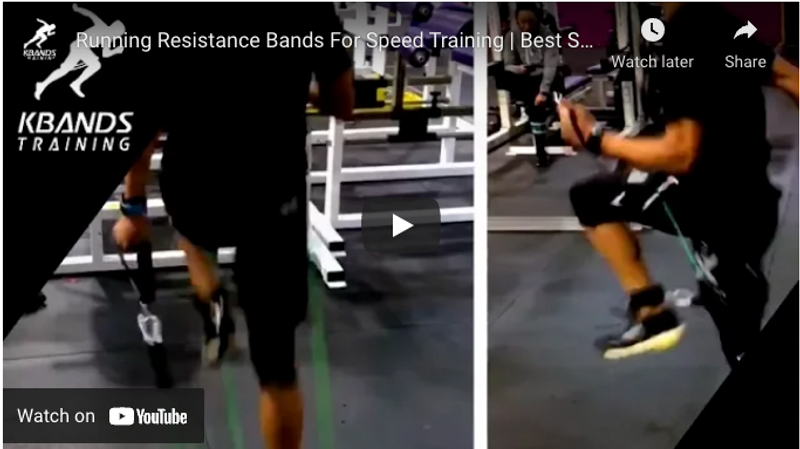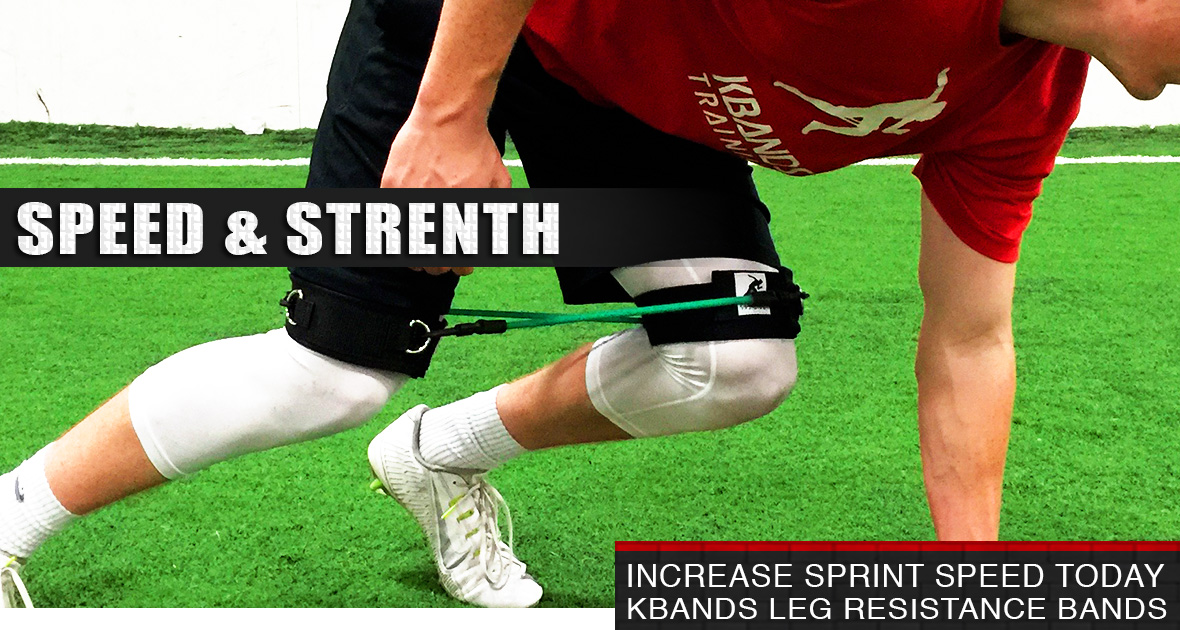Running Resistance Bands For Speed Training
Speed training can always be optimized with resistance bands. Listed in the video below you will see resistance bands for the upper body and lower body to maximize your results. Running resistance bands can help improve muscle activation and lead to more explosive training. View the video below as we demonstrate the proper form and technique to maximize your results utilizing our running resistance bands.
How Should You Use Running Resistance Bands
Kbands Leg Resistance Bands offer a lot of variety when it comes to speed training. You can complete drills that mimic your sports specific movements. Whether your focus be sprinting on the track, or rounding second base cabinets can be a great addition to your speed training.
Upper body resistance bands, on the other hand, can sometimes be a challenge to accurately apply the forces to your body. simply waving your arms around with resistance bands will not translate to running speed. Mounting them at a specific angle to improve activation in your running form is the key. The speed drill listed in the video is a great example of how to mount resistance bands to a low structure for optimal resistance. Notice the athlete is driving his arms up through resistance achieving optimal muscle stimulation throughout the shoulders to help drive him forward during sprints. The KB Powerbands include wrist straps that will help you achieve proper mounting angles as well as activation points.
Other Types Of Speed Training
Running with resistance bands has been proven to increase stride length and can focus on stride frequency with certain techniques. Other speed training techniques are:
▪ Plyometrics
▪ Footwork Training
▪ Power Training
What Is Plyometrics Training
Plyometric training is a technique utilized to increase your speed with ballistic movements. The overload of the muscles and stretch reflex will help improve neurological connections throughout your body leading to more speed. An example of plyometric training is depth jumps, tuck jumps, and split jumps. Many of these types of plyometric drills can also be optimized with resistance bands. Utilize the search bar at the top of the website and take a closer look at our plyometric training section.
What Is Footwork Training
Footwork training often times incorporates cones and speed ladders. Many athletes are very familiar with these types of exercises. Completing quickstep movements through a ladder or rounding a cone into a 20 yard sprint is something most are familiar with. This type of training can be completed multiple days a week as a warm-up, and a consistent training method for foot speed improvement.
What Is Power Training
Power training is often used by overloading the muscle with weights. This type of exercise is not as easy to see the correlation in speed development, but studies have shown that power training can have significant impacts on explosive muscle fibers throughout the body. Building these muscles can translate to speed and help improve athlete’s performance on the field.
Here are some examples of power training exercises
▪ Weighted Back Squat
▪ Power Clean
▪ Push Jerk
Power training is a technique that is often used by more advanced athletes. Younger athletes should not be completing these types of exercises as it may hinder their growth potential.
What’s Best For Me?
Here at KbandsTraining.com we advise athletes to begin with speed training techniques that can be completed individually. Footwork and resistance band training has been proven to give great results for increasing speed. The running resistance band drill above is a great example of how do utilize resistance bands to achieve maximum sprint speed. By building arm and leg explosiveness, athletes will feel the difference in the way they move. Complete this type of sequence 2 to 3 days a week for best results.


